Recent Posts
Let’s Get Down to Business, Your Business | SERVPRO of Summerlin North/Sun City
2/21/2024 (Permalink)
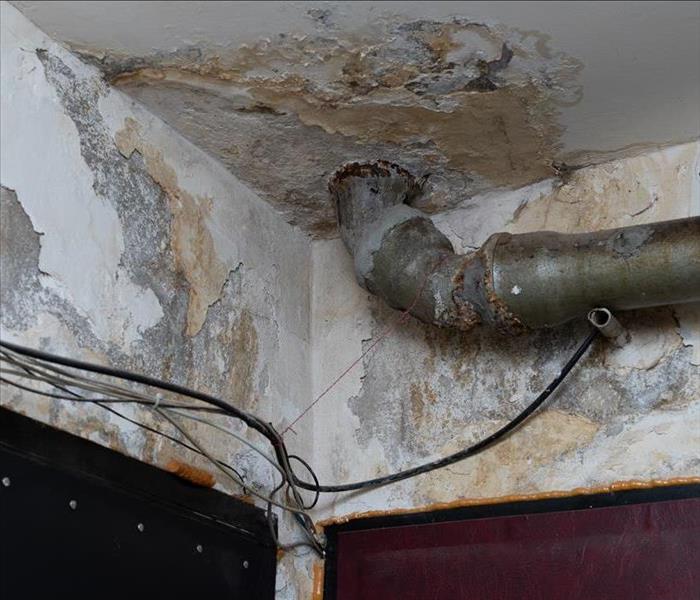 When disaster strikes your business, SERVPRO of Summerlin North/Sun City is here for the rescue. Call us today!
When disaster strikes your business, SERVPRO of Summerlin North/Sun City is here for the rescue. Call us today!
Owning a business can be one of the most rewarding endeavors that you take on, but it can also be one of the most overwhelming experiences of your life! There is so much to do and so many schedules to keep, plans to make and tasks to accomplish.
While all of this work is worth it in the long run, it can be hard to keep up with every single thing on your plate at once. That’s why we are here to help.
SERVPRO of Summerlin North/Sun City is proud to offer our full restoration and cleaning services to the amazing businesses in our community 24/7.
We See You Through Disasters
Disaster situations can happen at work at any time, just like they can while you are safely at home. In these situations, however, they tend to occur on a much larger scale because your building is bigger and the potential for widespread disaster is even greater. Not to worry, though!
Our team is trained in large-loss recovery, and we will respond right away the minute you call us. We understand how detrimental unexpected closures can be to your bottom line as well as how frustrating they can be to your employees, which is why your project becomes our top priority. We will remove debris, clean, sanitize and rebuild your property to be just like it was before the disaster occurred so you can open back up faster.
We Can Keep It Clean
After a long day of work, it can be hard to find the motivation you need to pick up your cleaning supplies and get to work. With SERVPRO on your side, you don’t have to! We have a full-service cleaning crew that can tackle all sorts of cleaning duties for you, including everything from deep carpet cleans all the way to HVAC and vent cleaning.
We can even become your regular cleaning partner by coming out to your property routinely to provide your building with general cleanings. A clean building is not only important for your customers’ satisfaction, but it is also important for the health of your staff! Removing dust, dirt, grime and allergens from your building can help everyone breathe easier.
Biohazard Situations
Life can get messy, and sometimes the unexpected can leave you with a serious situation on your property. Biohazard substances should always be cleaned up by a professional because they can be dangerous or even toxic to handle.
Sewage leaks, bloodborne pathogens and even hoarding situations can harbor dangerous bacteria. We have the tools and proper PPE to clean up and sanitize your space safely.
We can also handle mold infestations! Mold can appear quickly and grow into entire colonies in just a few days. Calling us right away ensures your space will be clean and your air will be purified. We can even tackle repairs if the mold starts to degrade your structural supports.
Consider us one of your partners in business. We are here for you for whatever cleaning or restoration needs you have in order to run a successful business.
Let us help you make your business the best it can be. Contact SERVPRO of Summerlin North/Sun City today.
The Timeline of a Water Leak | SERVPRO of Summerlin North/Sun City
11/21/2023 (Permalink)
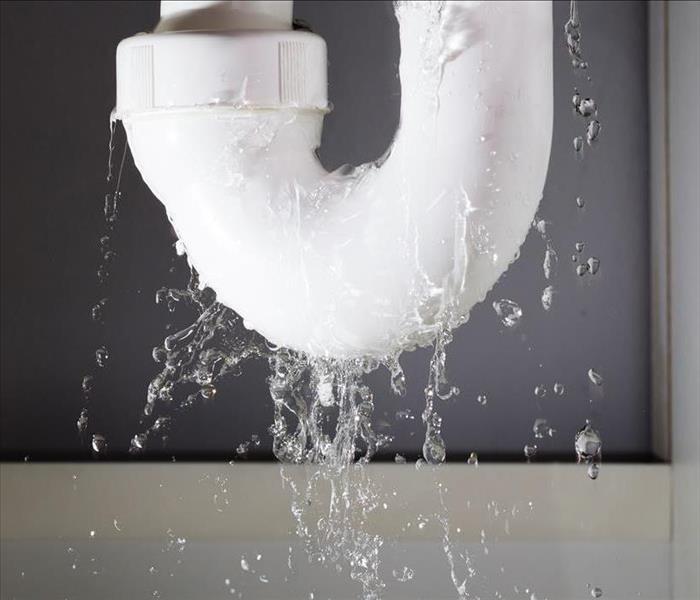 Has water damage left your home in a disastrous state? Call SERVPRO of Summerlin North/Sun City today. We are Here to Help®?.
Has water damage left your home in a disastrous state? Call SERVPRO of Summerlin North/Sun City today. We are Here to Help®?.
We are all so busy nowadays that we rely on our homes to work quietly behind the scenes for us while we jet off to work, school, evening activities and family events. While our homes are reliable to a certain extent, all it takes is for one system to malfunction for a disaster to occur.
Sometimes those situations are obvious, like your HVAC system malfunctioning and home becoming uncomfortably hot, but others can be much trickier to track down. Sneaky water leaks can occur behind walls and under floors and can cause serious issues to occur before you even discover the problem in the first place.
Where Water Leaks Start
A leak can start anywhere you have water flowing through your home. Faulty pipes, old washing machines or a loose water connection around your sink can lead to a drip or a deluge in a short amount of time.
If the water leak is happening behind your walls or under your floors, it will slowly start to seep into every surrounding area. It will leak into cracks, crevices, soft sub flooring and carpets, and it can even leak down walls. A single drip or tiny leak may not seem like much, but even a hairline crack can eventually leak multiple gallons of water each day.
What to Do About It
Water leaks can sometimes be hard to spot, but when you do, the situation could have been happening for a while and the damage may be significant. Lingering moisture can start to affect structural supports as well as load bearing walls. It can also lead to mold growth that can eat away at your home little by little.
As soon as you discover the water spot, leak or mold infestation, get us on the phone.
While we are asking our questions and creating our restoration plan for you, see if you can locate the water shut-off valve to the surrounding area. If the situation was caused by a faulty appliance or water line, stopping the flow of water can ensure the problem doesn’t get any worse.
How We Can Dry Up the Water
When water gets behind your walls or under your floors, it can be really tricky to dry up on your own. That’s where we come in! We have the industry-leading drying equipment like air movers and industrial blowers that will ensure every inch of your home is dried out. We even have thermal imaging cameras that can detect hidden or lingering moisture.
Once your space is dry, we can address any structural damage that the water caused during this whole ordeal. Damaged walls, floors and ceilings should be repaired quickly so the damage doesn’t further compromise your living spaces. We can rebuild and repair every part of your affected space quickly and efficiently.
We can tackle your water damage problem today! Contact SERVPRO of Summerlin North/Sun City right away.
Preparation Tips for Flash Flooding | SERVPRO of Summerlin North/Sun City
11/21/2023 (Permalink)
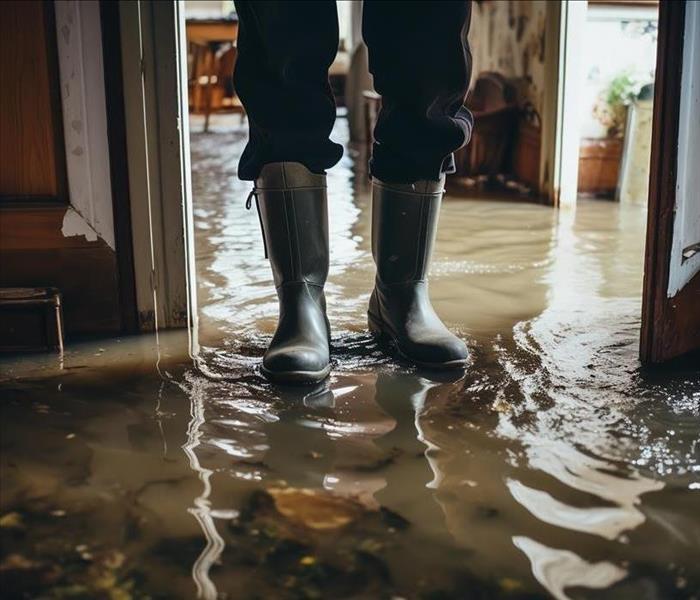 The repercussions of flash flooding can be devastating to your home. Call SERVPRO of Summerlin North/Sun City today to restore the damage!
The repercussions of flash flooding can be devastating to your home. Call SERVPRO of Summerlin North/Sun City today to restore the damage!
Floods can surprise us throughout the course of the year, mainly because we don’t get much rain on a regular basis! However, that’s what makes flash flooding conditions so prevalent in our area.
The dry and arid ground can’t absorb a ton of water at once, and so it can be easily overwhelmed and the runoff can start to flow down the streets and into homes.
Flash flooding situations can be scary when they happen, so knowing what to do before, during and after is key to staying safe. Our flood restoration team explains below some of the best things to do when flood conditions are present.
How to Prepare
Start preparing as soon as the flood watch or warning is issued, even if it hasn’t started raining yet. Conditions can deteriorate quickly and become dangerous in just a few minutes. Head for home if you aren’t there yet, and avoid low-lying areas and roads that are known to flood during storms.
Tidy up your yard by moving any household objects, child’s toys and lawn equipment into your home or garage for safekeeping, and consider moving your car inside as well. It only takes about 12 inches of water to sweep away certain cars.
Secure anything that can’t be moved in, like trampolines, grills and patio furniture. With the right wind and the perfect amount of fast-moving water, many of your possessions could float away if you aren’t careful.
Waiting for the Water
Move any important documents or fragile keepsakes off of the ground and out of the lowest level of your home and gather your emergency kit. Flood situations can easily knock out power and create dangerous electrical situations, so be sure to have a flashlight on hand as well.
After that, sit tight in a higher room in your home and keep your weather radio nearby. If water does start rushing in under your doors or starts flooding into your basement, try to stay calm and stay above the water line. Eventually the water will stop flowing in and the storm will move on.
Move cautiously around your home as you assess the damage, taking care to avoid walking through the water if possible. If you must walk through the water to get out safely, find a pair of sturdy boots to put on. Floodwater can have sharp debris, toxic substances and other dangerous materials lurking beneath the surface.
What to Do After a Flood
The best thing to do is to take pictures of the damage right away and then give us a call. The fresh images can help us better understand your situation, but they can also help ensure your insurance claim is being processed as accurately as possible.
Once we arrive, our main focus is to secure your home from further damage while we work on extracting the excess water. Our team can tarp over your roof, board up windows and remove any possessions in the affected room to prevent unnecessary damage.
We are also trained in proper document drying techniques as well as upholstery drying and cleaning.
Now that the water is gone and your possessions are dry, we can get started on repairs. Even just a few inches of standing water can ruin carpets, walls and floorboards.
We can replace all of this for you as quickly and as efficiently as possible. Once we are finished, we can even sanitize your space to prevent mildew and mold growth. We truly always have your back.
Floodwater can be dangerous and damaging. Contact SERVPRO of Summerlin North/Sun City today.
Understanding Summerlin, NV: Common Summer Storms and How to Prepare
6/21/2023 (Permalink)
Located in the heart of Nevada, Summerlin experiences a unique climate characterized by hot summers and mild winters. While known for its sunny days, this region is not exempt from occasional storms that can bring heavy rain, gusty winds, and even flash floods. Understanding the types of storms that commonly occur in Summerlin is essential for residents to stay prepared and mitigate potential damage. In this blog, we will explore the most common summer storms in Summerlin, NV, and provide valuable tips on how to be ready for them.
Monsoon Season: Powerful Thunderstorms and Flash Floods
Summerlin experiences a monsoon season typically between July and August. These monsoonal thunderstorms bring intense bursts of rainfall, strong winds, thunder, and lightning. The rapid accumulation of water can lead to flash floods, especially in low-lying areas. It is essential to monitor weather reports during monsoon season and be prepared for sudden storms and potential flooding.
Dust Storms: Visibility Hazards and Property Damage Risks
The desert environment surrounding Summerlin makes it prone to dust storms, also known as haboobs. These storms are characterized by strong winds that carry massive amounts of dust and debris, causing reduced visibility and potential property damage. To prepare for dust storms, ensure your property is well-maintained, with secure windows and doors. Have a supply of dust masks and be ready to protect valuable items indoors.
Heatwaves: Extreme Temperatures and Increased Fire Risks
Summerlin is no stranger to scorching temperatures during the summer months. Heatwaves are common and can pose health risks, as well as increase the potential for wildfires. Stay informed about heat advisories and take necessary precautions to stay cool, such as staying hydrated, using sun protection, and seeking shade or air-conditioned spaces.
Severe Thunderstorms: High Winds, Hail, and Lightning
While less frequent, severe thunderstorms can occur in Summerlin during the summer months. These storms bring strong winds, heavy rainfall, hail, and frequent lightning. It is important to stay indoors during severe thunderstorms and secure any loose objects outside that may become projectiles in high winds.
Preparation Tips:
Stay informed: Regularly check weather forecasts, warnings, and advisories from reliable sources.
Create an emergency kit: Include essential supplies like water, non-perishable food, flashlights, batteries, and a battery-powered radio.
Secure your property: Trim trees, secure loose items, and ensure windows and doors are properly sealed.
Develop an emergency plan: Establish communication methods, identify safe areas in your home, and discuss evacuation routes if necessary.
Maintain insurance coverage: Review your insurance policies, particularly for flood and wind damage, and ensure you have adequate coverage.
Being aware of the types of storms that commonly occur in Summerlin, NV, and preparing accordingly is vital for residents to protect themselves and their property. By staying informed, taking necessary precautions, and having a well-thought-out emergency plan, you can mitigate the risks associated with summer storms. Remember to prioritize safety, seek professional help when needed, and rely on reputable disaster restoration experts in the event of storm-related damage.
At SERVPRO of Summerlin North/Sun City, we are dedicated to helping Summerlin residents recover from storm damage and restore their homes. Our experienced team is equipped to handle various storm-related restoration needs, providing efficient and reliable services to ensure your property is brought back to its pre-storm condition.
What to Do When an Appliance Leaks | SERVPRO of Summerlin North/Sun City
6/21/2023 (Permalink)
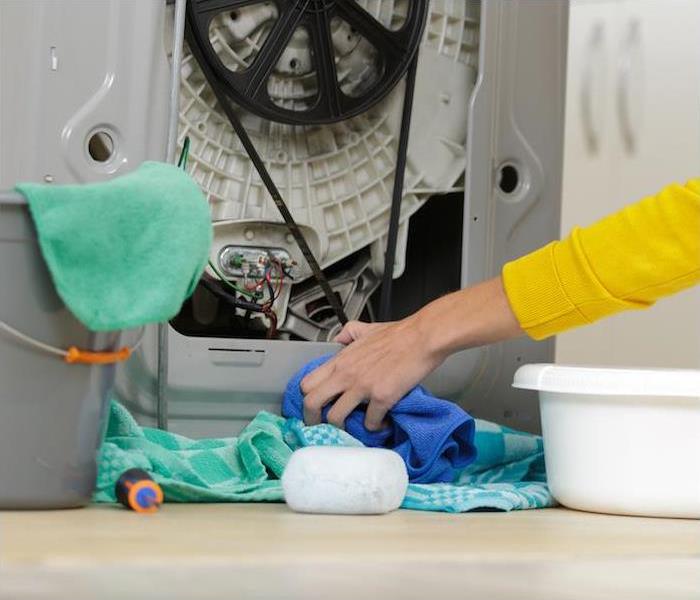 Experienced a water leak in your home or business? Call SERVPRO of Summerlin North/Sun City to get your home back in shape.
Experienced a water leak in your home or business? Call SERVPRO of Summerlin North/Sun City to get your home back in shape.
Our appliances—we all love them, yet they always give us trouble when we don’t have the time and attention to give to them. Even though we rely on our appliances to clean our clothes, wash our dishes and keep our water warm, we tend to overlook routine maintenance often when we are busy running out the door to and from our activities.
While you are probably thinking that you would be quick enough to catch an emerging water leak before it causes widespread damage, you may be wrong! Water can be sneaky and can get into many areas of your home without much forewarning. Read on as we explain how to recognize an emerging problem and what to do if it is already too late.
The Progression of Water Damage
We are lucky to have appliances like dishwashers, washing machines and water heaters in our lives, but they have the ability to malfunction at any point. If a blockage occurs or an electrical failure causes the machine to stop working, water can seep or pour out and will start to infiltrate every crack and crevice that it can as the puddle grows on your floor.
If the leak happened in front of your machine, you will probably notice the water right away. If it happened in the back, that water could leak down your walls or into your floors for days before you see it.
If the water seeps into your floor or behind your walls, it becomes really hard to dry out on your own. While you can take a mop and towel to your floors, you can’t as easily get behind your walls. As the water lingers, it becomes stagnant and can introduce mold or mildew.
Mold loves dark and damp spaces and will quickly become an infestation until you take action to stop it. It can eventually start to degrade your home’s structural integrity if the water and mold is left long enough!
What to Do When You Discover Water
If you come home to a puddle, the first thing you need to do is find the main water valve to the appliance. Shutting this off will stop the flow of water so you can control the situation and catch your bearings. Usually this valve is on the back of the affected machine along the pipe that connects it to the rest of your water lines.
You should also turn off the power to the appliance. This helps keep you safe from a possible electric shock, and it is a reliable way to ensure it won’t start back up again and cause more problems for you while you are figuring out what to do. After the situation is controlled, call SERVPRO of Summerlin North/Sun City!
Why a Professional Restoration Is Necessary
Helping our community recover from damage is what we do best. That is why we want you to call us!
We will walk you through the entire process and take the mess off of your hands for you. While you could handle the initial mopping and set up a fan, you probably won’t be able to get all of the water.
That’s where we come in. Our industry-leading powerful drying equipment will ensure every drop of moisture is removed from your walls, floors and ceiling, and we can even check for any hidden moisture with our specialized equipment.
Water can easily warp wood and vinyl flooring, so we are also trained to repair any damages that you are now facing as a result of the water leak. Our team is here for whatever you need in order to fully recover from a pesky appliance leak.
If your home or business has suffered water damage, call SERVPRO of Summerlin North/Sun City.
Tips and Tricks for Preventing Mold in Humid Climates
5/8/2023 (Permalink)
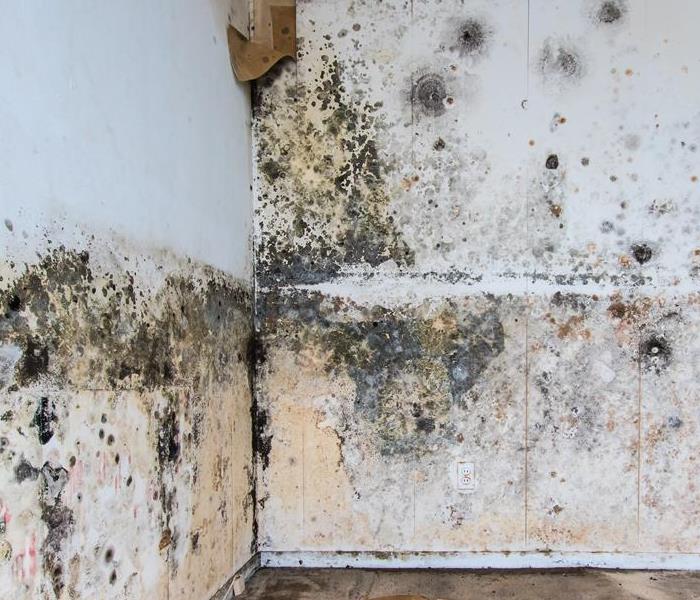 Follow these steps to preventing mold in humid climates. It is essential to keeping your home free from mold.
Follow these steps to preventing mold in humid climates. It is essential to keeping your home free from mold.
Mold is a type of fungus that grows in humid environments. It can be found almost anywhere and on many different types of materials, including wood, paper, carpeting and drywall. The most common types of mold are:
Black mold (Stachybotrys chartarum)
Blue-green algae (Cyanobacteria)
Mold spores are microscopic and float through the air when disturbed. They're also carried by water droplets from leaking pipes or other sources inside your home. When these spores land on damp surfaces such as wood or drywall that has been exposed to moisture for an extended period of time, for example after flooding, they begin to grow into colonies called mycelium.
These colonies look like fuzzy patches on walls or floors that may smell musty when disturbed by touch or foot traffic.
What Causes Mold?
Mold is a fungus that grows on organic matter. It needs moisture, oxygen and a food source to survive. The most common types of mold grow in warm temperatures with high humidity.
Mold spores can be found almost anywhere--in soil, dust and air conditioning systems. They're even present in your home's insulation! If you have water damage or leaks that go unnoticed for too long (or if there's simply too much moisture in the air), mold may begin to grow on your walls or ceiling.
Signs of Mold in the Home
- Musty smell
- Discolored walls
- Visible mold
Preventing Mold in Humid Climates
In humid climates, it's important to keep humidity levels low by using dehumidifiers and exhaust fans. You should also inspect your home regularly for signs of water damage.
Testing for Mold
You can test for mold in your home using DIY kits and professional tests. These kits are available from many retailers, including Amazon and Home Depot. They're inexpensive and easy to use, but they don't always give accurate results because they don't test for all types of mold or measure the concentration of spores in the air (more on this below). Also keep in mind that if you do find mold with one of these kits, it's not necessarily dangerous, it just means there's some kind of fungus growing somewhere in your house that needs attention!
Professional Mold Testing
If you want more reliable information about what kind(s) of fungi are present in your home or workplace environment, consider hiring an expert who can perform professional testing using more advanced methods such as spore traps or culturing samples from surfaces like ceiling tiles and carpeting. This type of analysis will help determine whether there is an issue with indoor air quality; if so, proceed with caution when removing any affected materials since some species may release harmful toxins when disturbed (e.g., Aspergillus versicolor).
Preventing Future Mold Growth
Repair water damage. Mold grows in damp areas, so if there's any water damage in your home, it's important to repair it immediately.
Seal cracks and gaps in walls and floors with caulk or foam sealant. This is especially important around windows where humidity can get into the house from outside (and vice versa).
Reduce humidity levels in your home by using fans for ventilation and running an air conditioner during hot weather if possible. You can also use dehumidifiers if necessary--just remember that these appliances require maintenance!
Finally, make sure you have enough lighting so that you can see what needs cleaning up around the house on a regular. Use dehumidifiers, which can be especially helpful if you have a basement or crawlspace that tends to get humid and moldy during the summer months.
You can prevent mold in humid climates by taking the right precautions. If you notice any signs of mold in your home, contact a professional immediately to have it removed before it spreads further!
Water leaks are Serious
2/20/2023 (Permalink)
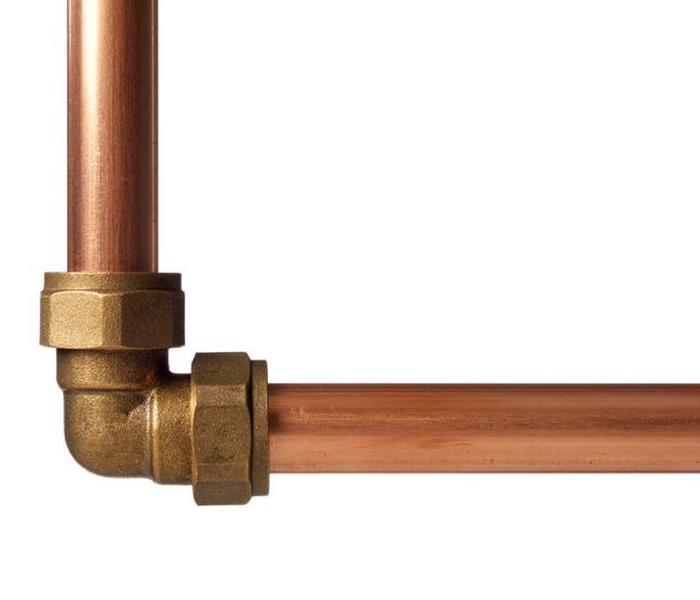 If you experience water damage, give SERVPRO a call today.
If you experience water damage, give SERVPRO a call today.
Water leaks are a serious business. They may seem harmless at first, but they can quickly add up to thousands of dollars in damage if left unattended. If you think your home has a leak, here's what you need to know.
Costly problem.
Water leaks can be costly and damaging. A leaky pipe, for example, can cause mold and mildew to grow in your home. This problem can lead to structural damage as well as electrical problems. It's not uncommon for homeowners who suffer from water damage to find that they have no insurance coverage because their policy excludes "water intrusion" or "inland flooding." The good news is that there are steps you can take now so you're prepared if this happens.
Make an inventory of all the appliances in your home--kitchen appliances like stoves and refrigerators, bathroom fixtures such as toilets, laundry machines, dishwashers, faucets/spigots outside the house where possible access points may exist once water starts flowing.
Water damage can be costly, and it's not just your wallet that will take a hit. A small leak in your home can add up to tens of thousands of dollars in damage.
The most common issues caused by water damage include mold growth, structural problems such as warping wood floors or buckling drywall and electrical issues such as short circuits or flickering lights.
Property Damage.
Water damage can be caused by many things including, leaky faucets, broken pipes, leaking appliances (e.g., dishwashers, washing machines) Busted pipes or water main breaks in your neighborhood that lead to flooding in your home (this is more likely during winter months).
Other common causes of water damage, roofs that leak when it rains or snow melts, roofs should be repaired quickly before they cause major problems with mold and structural damage inside the house/apartment building. Windows that leak condensation over time--these can also be fixed before they become serious problems
Unattended Damages.
Water damage can cause serious problems in your home. If you have a leak, it's important that you address it right away. Water damage can lead to mold and mildew, structural damage, and electrical problems. Water leaks can also create financial problems for homeowners because they usually require extensive repairs or replacements that cost thousands of dollars.
Mold growth is caused by moisture build-up on surfaces like walls and floors. When this happens at a rapid pace (like from a burst pipe), it can be difficult for homeowners to detect before it becomes an issue.
Leaking water is a serious problem that can lead to major damage, but it's also an easy one to prevent. If you're not sure if your home has any leaks or needs repair work done on its plumbing, contact us today! SERVPRO of Summerlin North/ Sun City can come out and give you an estimate on what needs to be done so that your pipes are safe from future leaks.
Important Storm Damage Tips
2/8/2023 (Permalink)
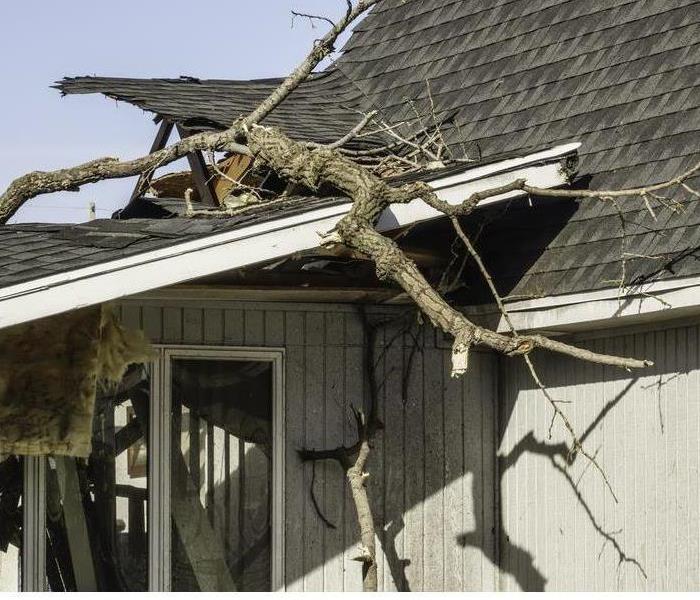 After a storm, give the professionals a call today!
After a storm, give the professionals a call today!
Storms can cause a lot of damage to homes. If you do not know how to recuperate from storm damage, then it is important that you hire a professional. At SERVPRO of Summerlin North/ Sun City, we have been helping people with their home restoration needs for many years. We will make sure that your home is taken care of after a storm and that you are back in your house as soon as possible.
Inspect your home for Damage
After a big storm, it is important to inspect your home for damage. The best way to do this is by doing a thorough walk-through of your property and checking every room. It's also helpful to take pictures of any damage so you can reference them later when claiming insurance or filing claims with the government.
Here are some things you should look for:
- broken windows or doors
- damaged walls, ceilings, or floors (cracks in drywall may indicate that there's been water damage)
- fallen trees/limbs/branches (make sure they haven't damaged anything on the inside of your house)
Check your Homes Exterior
After a storm, it's important to inspect your home’s exterior. This includes checking for missing shingles, damaged or missing gutters, damaged siding and windows and doors. You should also look at roof vents and chimneys to see if they were affected by the storm.
Inspect your Roof
You should inspect your roof to make sure there aren't any missing, broken or loose shingles. Look for discoloration and curling of shingle edges as well. If you find that there's damage to your flashing, this must be repaired before moving on to the next step in the inspection process. If you don't know what flashing is or how it works, ask a professional about this step in the inspection process so that you can properly evaluate and fix any damage that exists in your home.
Also check for missing or damaged gutters because they are an important part of protecting your home from water damage during storms like hurricanes and tropical storms.
Look for fallen trees and limbs
You should also look for trees that have fallen or are leaning toward your home. You will want to check them for stability, and remove any branches or leaves that could be potential fire hazards. Next, you should inspect your roof for damage from falling debris, such as branches and leaves falling from nearby trees. If you see any damage on your roof, it is important to repair this as soon as possible because leaving it unattended could result in further structural breakdowns within the house itself.
Check the interior of your home
Inspect the interior of your home for damage to walls, floors and ceilings. Check for leaks in plumbing or electrical systems and make sure that any damaged parts are repaired before you resume normal use.
Take care of any leaks ASAP
If you notice water coming into your home, it is important to take care of it as soon as possible. Water can cause mold and mildew to grow in your home. If you have any concerns about mold or mildew, call a professional immediately.
If you do not know how to inspect your home after a storm call SERVPRO of Summerlin North/Sun City
If you are unable to inspect your home after a storm, or if you would like someone else to do it for you, call SERVPRO of Summerlin North/Sun City. They are the experts in this area and can help you find out what damage occurred.
They have the experience needed to look for storm damage and know what to do next. If there is any water damage in your home, they will also know how best prevent secondary damages. They have everything needed for their service available at all times including rain gear and boots on hand in case they need them when working outside on your property during inspection.
The most important thing that you can do after a storm is make sure your home is safe and secure, and we hope that these tips will help you do just that. If not, call us at (702) 778-9461 or visit our website for more information about how we can help with your property restoration needs!
What Is the Water Damage Restoration Process?
1/4/2023 (Permalink)
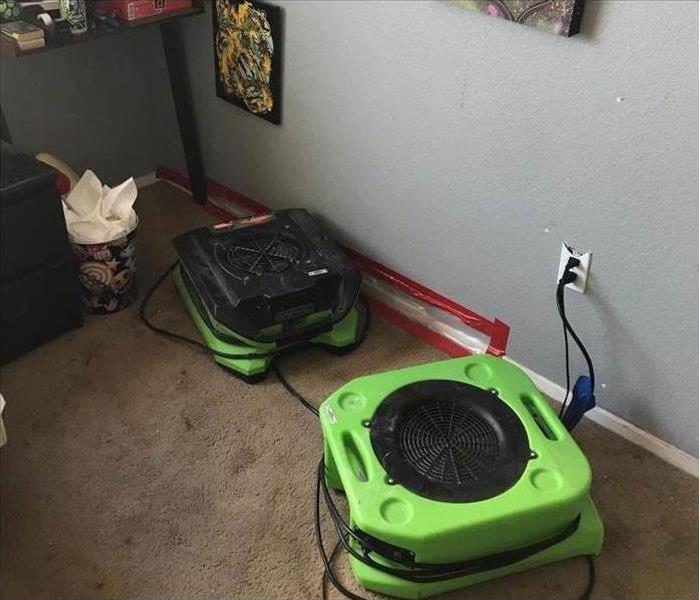 During the water remediation process our team utilizes air movers.
During the water remediation process our team utilizes air movers.
Water damage is a serious problem for any business. When water enters your building and causes damage to the contents and structure, you may need professional help to restore it. The water damage restoration process can be complicated and time-consuming, but it's also an important step toward making sure that your business is operating as normally as possible. In this article, we'll explain the steps involved in repairing water damage and why it's so important that you hire a specialist if you find yourself in this situation.
What Is the Water Damage Restoration Process?
The water damage restoration process is a long and complex one that involves several steps. Each situation is different, but in most cases the process can be broken down into these stages:
Pre-Inspection and Assessment
Water damage restoration professionals will perform a pre-inspection of your property. The purpose of this inspection is to determine the extent of damage, assess what repairs are needed and see if there are any immediate hazards that need attention before they can begin working on the water restoration process.
They will check for structural damage, such as cracks in walls or floors. This can be caused by excessive moisture in the air, which causes freezing and thawing throughout your home every day during winter months.
They will also check for electrical issues related to power surges from water appliances (such as washing machines) that have short circuits when exposed to moisture in an electric space after a flood has occurred inside your home. This could cause further destruction if not addressed immediately!
Water Removal/Water Extraction
Water Removal/Water Extraction: The first step in the process of water damage restoration is to extract any excess moisture from your home or office. This is accomplished by using powerful vacuums and dehumidifiers, which suck the water out of your walls, floors and other structural components.
Structural Drying: Next, we'll begin drying out your home or business. We'll use high-powered air movers to remove moisture from cracks and crevices in a process called "dehumidification." Once this has been completed, we can begin repairing any damaged areas of your property that were affected by wet conditions such as mold growth or rotting wood.
Drying and Dehumidification
The drying process is not complete until the water has been removed and the humidity in your home has decreased to a safe level. This means that you may have to move out of your home while it dries, especially if you live in an area where mold and mildew are prevalent. Once you can return to your home, you will want to make sure that your belongings are completely dry before putting them back into storage.
Mold Prevention
Molds thrive in wet environments with stagnant air; therefore, one of our most important steps during restoration is keeping moisture from returning to what was once a wet area of your home or business. This can be done through dehumidification techniques like extracting excess moisture from walls or floors using special equipment designed for this purpose (such as portable air movers), installing temporary ventilation systems such as fans or portable air conditioners until permanent changes can be made to ventilation systems inside homes or buildings after they’ve been repaired by water damage repair professionals
Cleaning and Sanitizing
Once a thorough inspection is completed and the water damage has been assessed, it’s time to begin cleaning and sanitizing. This is the most important step in the restoration process. The goal here is to remove all traces of the water damage and restore your property to its original state.
The first step in this process involves removing any debris from your carpeting or flooring using heavy-duty vacuums that can handle such rough work. You may also want to consider using a shop vacuum if you have one on hand (if not, ask us about renting one). Next comes dry removal of any drywall that has been affected by flooding or leaks—this means taking down walls and replacing them with new ones where necessary. Once everything is dry and ready for repair, we'll clean up all areas before applying a fresh coat of paint or wall paper depending on what needs done at each location onsite!
Restoration
Once the water has been removed, the next step is restoration. Restoration is the process of making your property as good as new. However, depending on the severity of your flood, it may be best to hire a professional company that has special equipment and skills to perform this work.
- Cleaning and disinfecting walls, doors, floors, ceilings and furniture
- Replacing drywall where needed
- Picking up debris from yards or driveways (if applicable)
Restoration can be a lengthy process that requires special equipment and skills. In many cases you may need to replace items like carpeting or insulation because they're wet and cannot be salvaged by drying them out alone.
When to Consult a Specialist for Water Damage Restoration
You should consider hiring a water damage restoration company if:
- The damage is severe and widespread.
- You are unsure about the source of the water damage.
- You have questions about the restoration process.
- You have questions about your insurance claim, which may involve filing a claim or filling out paperwork with various parties (such as your insurer or mortgage lender).
In addition to these factors, you should also be aware that it may cost more money to hire a specialist versus doing it yourself.
The water damage restoration process is a complex one and requires expertise. If you have any signs of water damage in your home, contact us immediately. We can help determine what’s been damaged, how much it will cost to fix and whether or not you need professional assistance.
How to Prepare for Wildfires
12/1/2022 (Permalink)
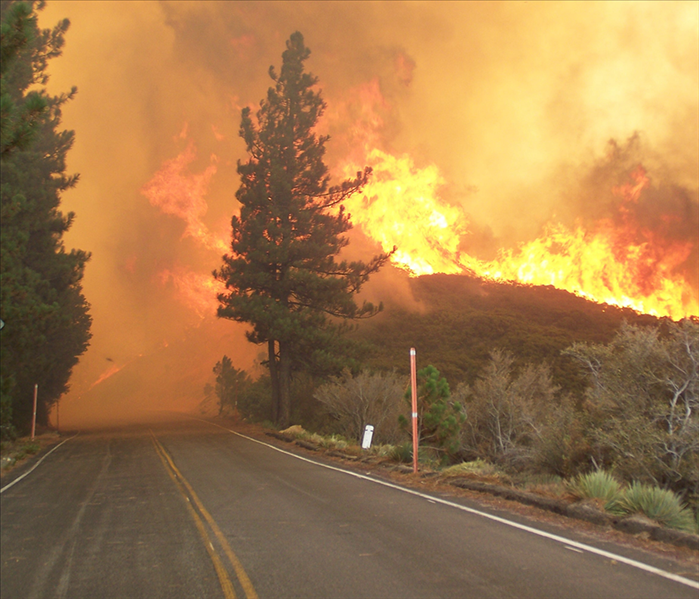 With the right planning, preparation, and resources, wildfires can be survivable.
With the right planning, preparation, and resources, wildfires can be survivable.
How to Be Prepared for Wildfires
Wildfires can be terrifying, but they're also natural parts of the ecosystem. And while they might not seem likely to happen, knowing how to be prepared for wildfires is important no matter where you live. If this is your first time dealing with wildland fires, take some time now to plan for the worst-case scenario if it does happen.
Know the signs and symptoms of wildfires.
If you smell smoke in the air, it could mean that a wildfire is nearby. You may also see ash falling from the sky or observe dry air and low humidity, as well as clear skies with strong winds and gusts. The smell of smoke should be your first sign that something is on fire nearby; if you don't smell anything but do notice other signs like those above, then it's likely that there is a wildfire nearby.
Have a plan for where to go if a wildfire approaches.
Planning ahead is key to reduce risk of injury or death. If you are at home, follow these tips:
- Have a plan for where to go if a wildfire approaches.
- Be ready to act quickly and leave if told to do so by local authorities.
- Be aware that there may be several ways out of your neighborhood, but not all roads are safe for travel during evacuations.
Providing enough water reduces risk of dehydration.
This is a crucial step. You can't live without water and having enough of it for each person in your household makes it less likely that anyone will suffer from dehydration. FEMA recommends one gallon of water per person per day, but the general rule is to always have at least one gallon per person per day on hand.
If you have tap water, boil it for at least 1 minute before drinking or use bottled water (but make sure to check expiration dates). Another option is to buy purifiers or filters that remove contaminants like bacteria and viruses from contaminated sources such as lakes or rivers.
You should gather the necessary supplies ahead of time, especially in dry weather. It is important to have enough food, water and medication for your family.
Plan for the worst and be prepared for it.
It is important to know what to do in the event of a wildfire as well as know your community's emergency plan and know how to respond in case of an emergency. Identify possible evacuation routes ahead of time so that if there is an evacuation order issued by local authorities.
Have a supply kit ready to go with enough food, water and other supplies for at least 72 hours. Pack items that are lightweight and portable such as cans of tuna or spam, dry cereal, peanut butter and crackers. Be sure the kit has any medications you use regularly. Include things like flashlights with extra batteries and wind-up radios so that you can get information on where it's safe to go if wildfires threaten your area. Also include important documents like proof of identity cards or birth certificates in case there is an evacuation order issued by local authorities.
With the right planning, preparation, and resources, wildfires can be survivable. But it’s important not to get complacent when it comes to wildfires. The key is being proactive about keeping your family safe from these natural disasters. By knowing what to do in case of a wildfire, as well as how they start and spread, you’ll be prepared if one ever strikes close by.
 When disaster strikes your business, SERVPRO of Summerlin North/Sun City is here for the rescue. Call us today!
When disaster strikes your business, SERVPRO of Summerlin North/Sun City is here for the rescue. Call us today!





 24/7 Emergency Service
24/7 Emergency Service







